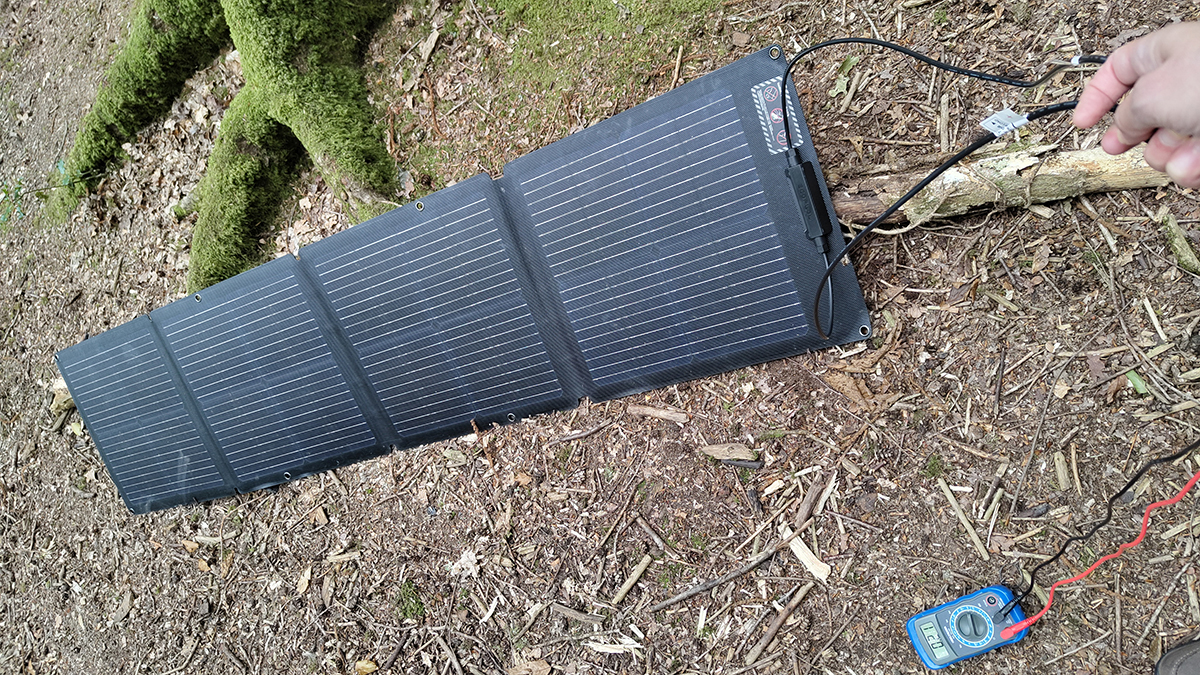11th Field Trip to Alice Holt Forest
On the 19th of August, I went for a maintenance trip to Alice Holt. As discussed in the previous field trip, the plan of this 11th field trip was to debug the EcoFlow solar panel by trying with a new solar charging cable, measuring if the solar panel is giving the expected voltage/amperage values using a multimeter and testing the solar panel in another space to avoid the shade of the canopies.
For this trip, I also wanted to establish a procedure for checks for Streamers I (Giorgio) and II (Paula). This involves:
- Checking that the solar panel is working as expected.
- Checking if the cables are well connected.
- Checking if the battery is charged as expected.
- Check that the streamer is switched on and is working.
- Checking that the items are securely and correctly positioned as expected (e.g. microphones facing slightly down, antenna facing up, solar panels correctly positioned, and so on).
Thirdly, I also wanted to continue with a few manual recordings of the two sites to understand better the soundscape characteristics of the site.
Status of Streamer Giorgio and Natural Soundscapes
Although Giorgio was working perfectly fine (still uniuninterruptibly, well done Luigi!), the metal cable that holds the dongle was a bit bended. If this has happened in the summer probably from a strong wind, we might need to reconsider a stronger material to hold the dongle tighter and resist the potential cold winds in the winter.
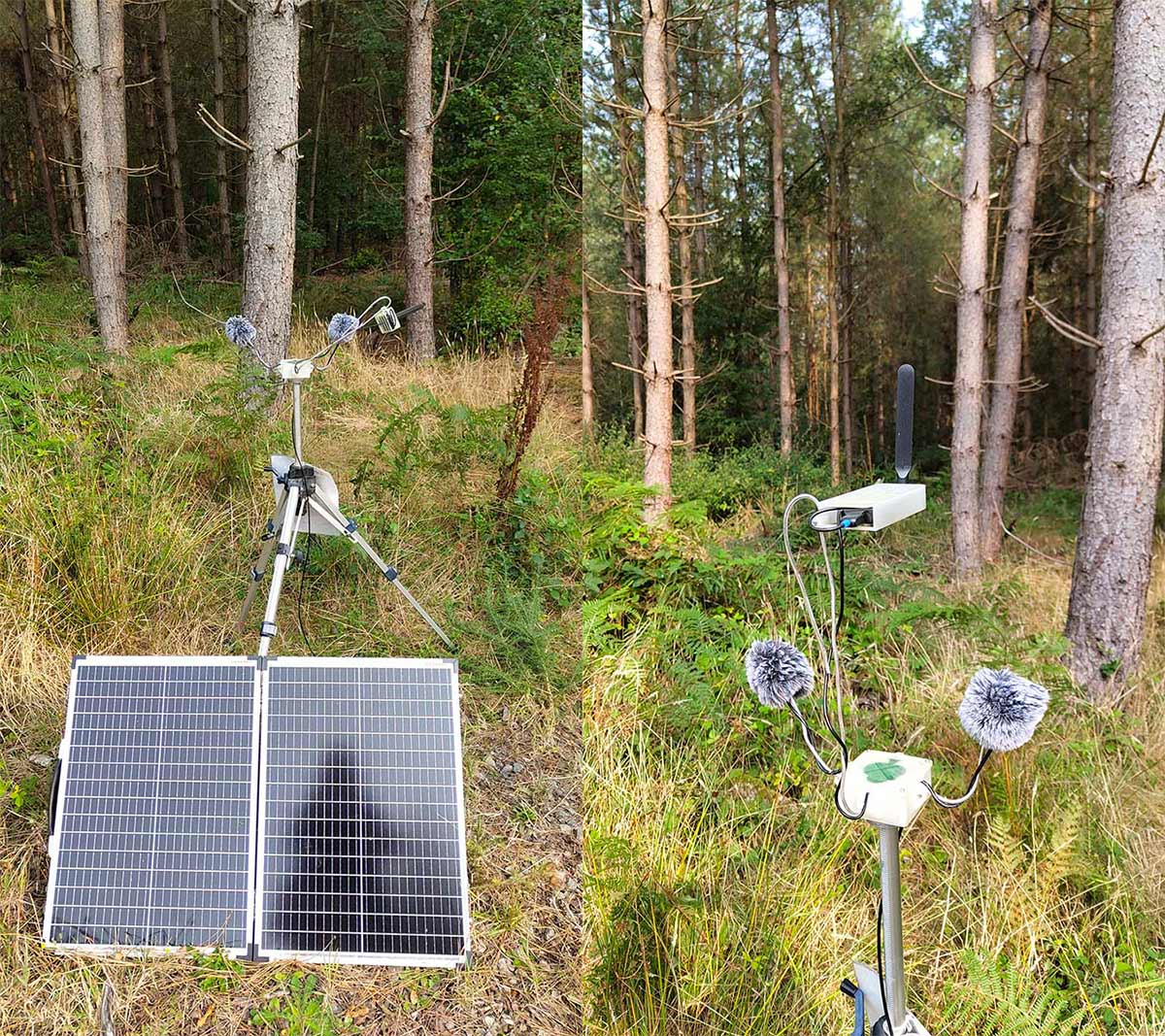
This time I wanted to also capture the fauna of the site. I installed the Flora Incognita, a free mobile app that automatically identifies plant species. After providing a few pics, it identified a shrubby blackberry, a black pine tree (coniferous), a maritime pine tree (coniferous), a white birch tree (deciduous), a bitter dock and a bracken fern. In general, we can describe the site as an area with conifers predominantly combined with a few deciduous trees.
I noticed the soundscape was different compared to last week. Probably the time of the day and the weather matters! For example, I could not hear the crickets’ chirps as loud and present as last week. I wonder if the cloudy day compared to last week is part of this.
The first recording is a quiet soundscape recorded at about 10am. You can hear birds singing from the distance, planes, an occasional insect approaching the microphone and a person walking that can be heard from the distance.
The second recording is another quiet soundscape recorded at about 10am. You can hear birds singing from the distance, planes and a kid talking that can be heard from the distance.
Status of Dendrophone and Modified Soundscapes
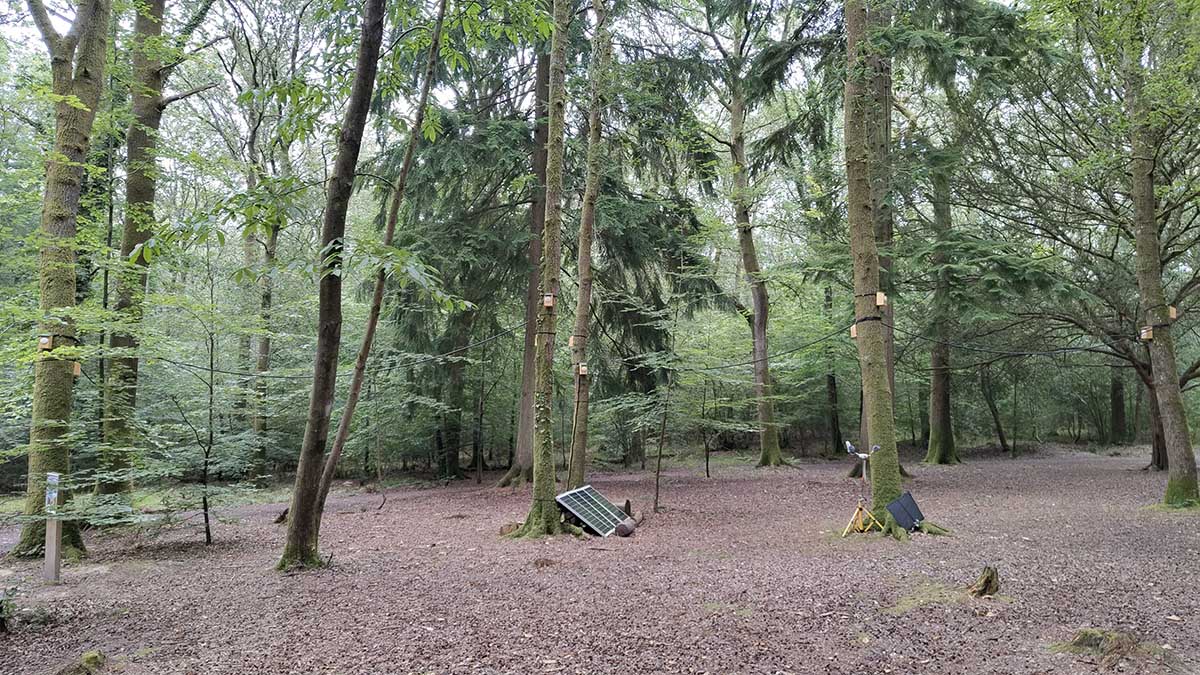
Pete’s Dendrophone installation was working perfectly well, which is a great achievement! A few of the wooden locks protecting the system’s box seemed to have been moved, so I put them back.
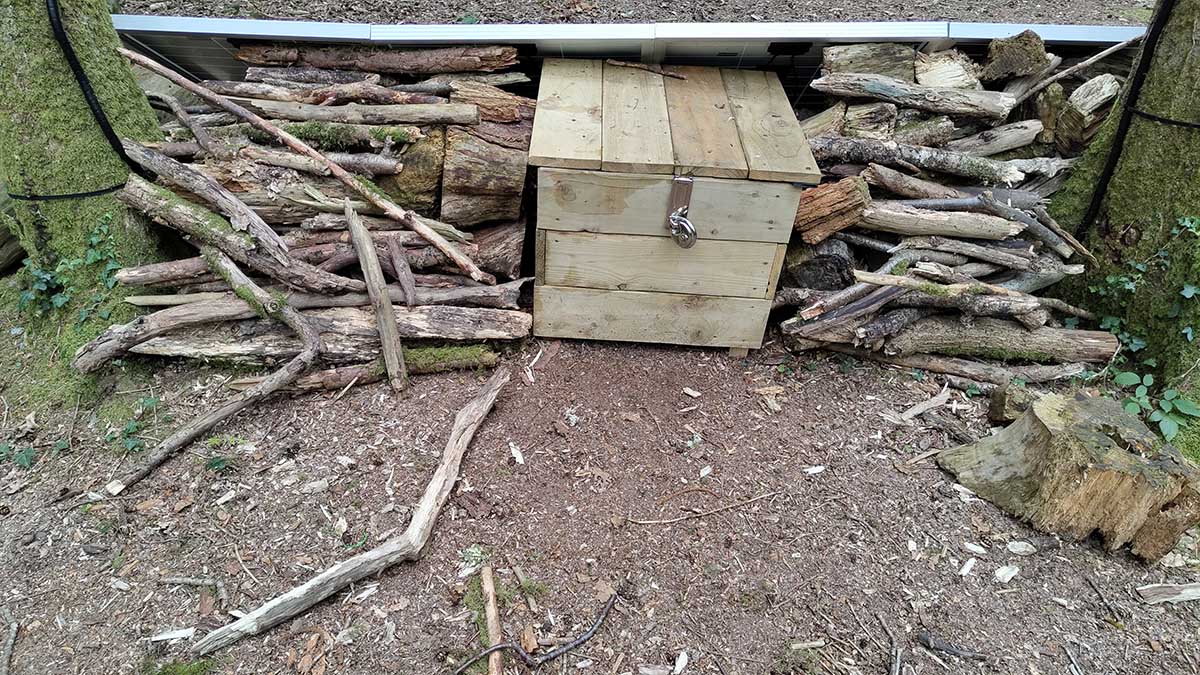

Here are two audio extracts of the immersive soundscapes produced by Dendrophone, which nicely merge with the natural sounds. The first audio extract was recorded at about 11am and we can hear the sound of the installation merged with birds singing, kids playing in the distance, occasional planes, and steps from a visitor. The second audio extract was recorded at about 2pm and we can perceive the sound of the installation merged with bird singing, kids playing at the distance, and occasional planes.
Status of Streamer Paula
The battery of the Ecoflow that powers Paula was totally dried out (again). This has been a recurrent problem where the solar panels do not seem to do their job. Hence, only with the battery, Paula lives for 3 days. I took the entire Ecoflow unit (battery and solar panel) and charged the battery using mains power. I wanted to measure the solar panel to see if there is any problem with them.
How To Test A Solar Panel Is Working With A Multimeter
The way of testing a solar panel with a multimeter is well explained in the following two videos:
- How To Test A Solar Panel Is Working With A Multimeter: a short and sweet video that gives a perfect summary of what is involved.
- How to Test Solar Panels! - this a longer video. The first part shows the same technique as the above video, whereas later it shows two more expensive (and complicated) techniques plus other tips when solar panels are faulty.
Note: The multimeter should be fused, and the fuse rating value should be higher than the amperage of the short-circuit current value of the solar panel - this is explained very well in the first video (0:36).
For complementary information, you can also check this short tutorial on how to test solar panels with a multimeter.
I followed the above instructions to realise:
- The open circuit voltage was giving 20.6V, which is within the range of correct values (it should be +/- 10% of 21.8V).
- The short circuit current was giving 0.9A instead of the expected 6.5A. As shown in the featured image at the top, under the canopy it was giving 0.2A. This is a problem!
I replaced the solar power cable with a new one and we also bought the Ecoflow bag on the 15th of July that went with the unit to the new location at the time (small meadow), so the unit/battery is very likely not the problem as we can use it for charging and the bag is weatherproof (we use gaffer tape to protect the open part of the bag to let the cables go inside safely). This can explain why the solar power input of the EcoFlow gives always 0.
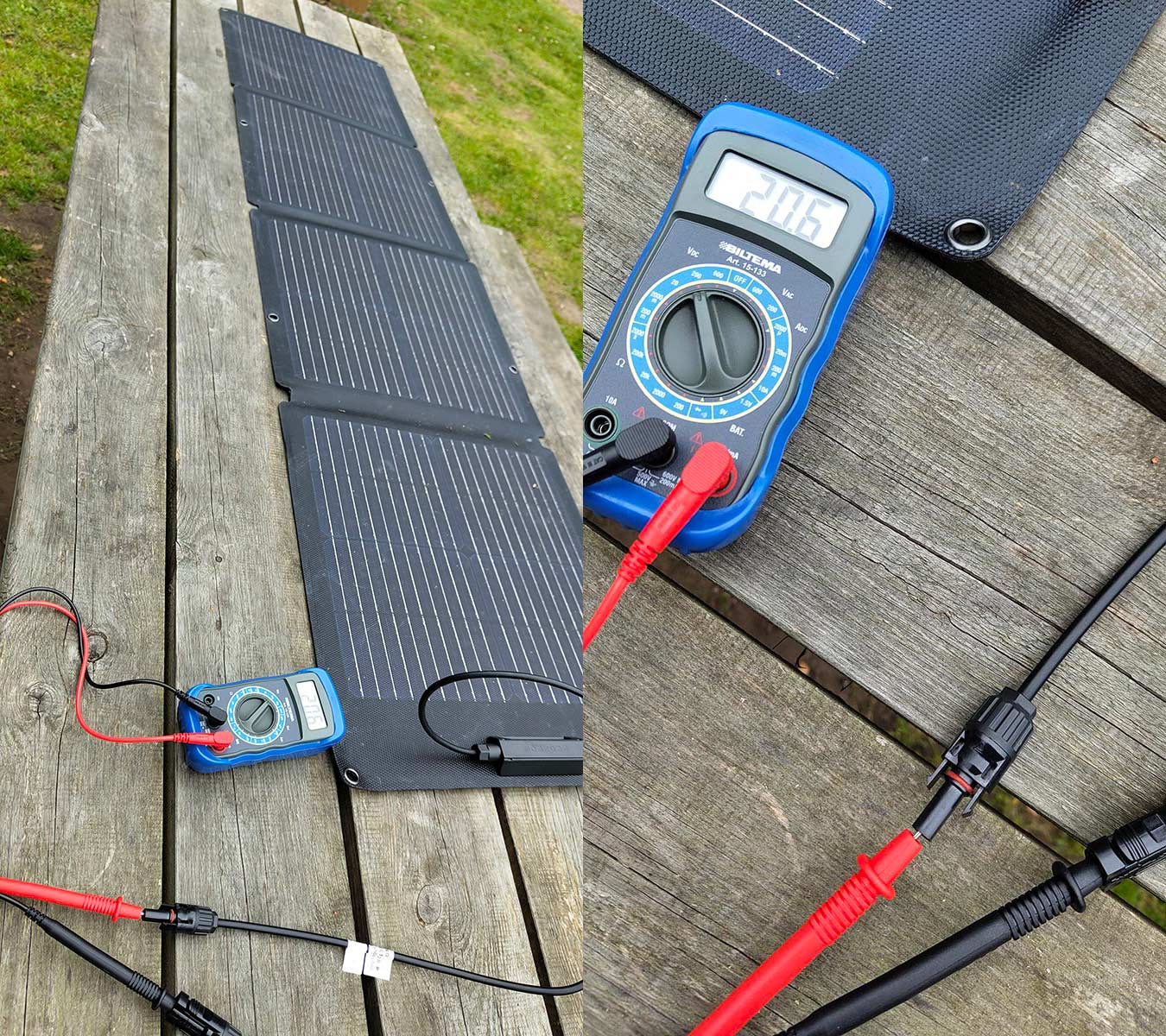
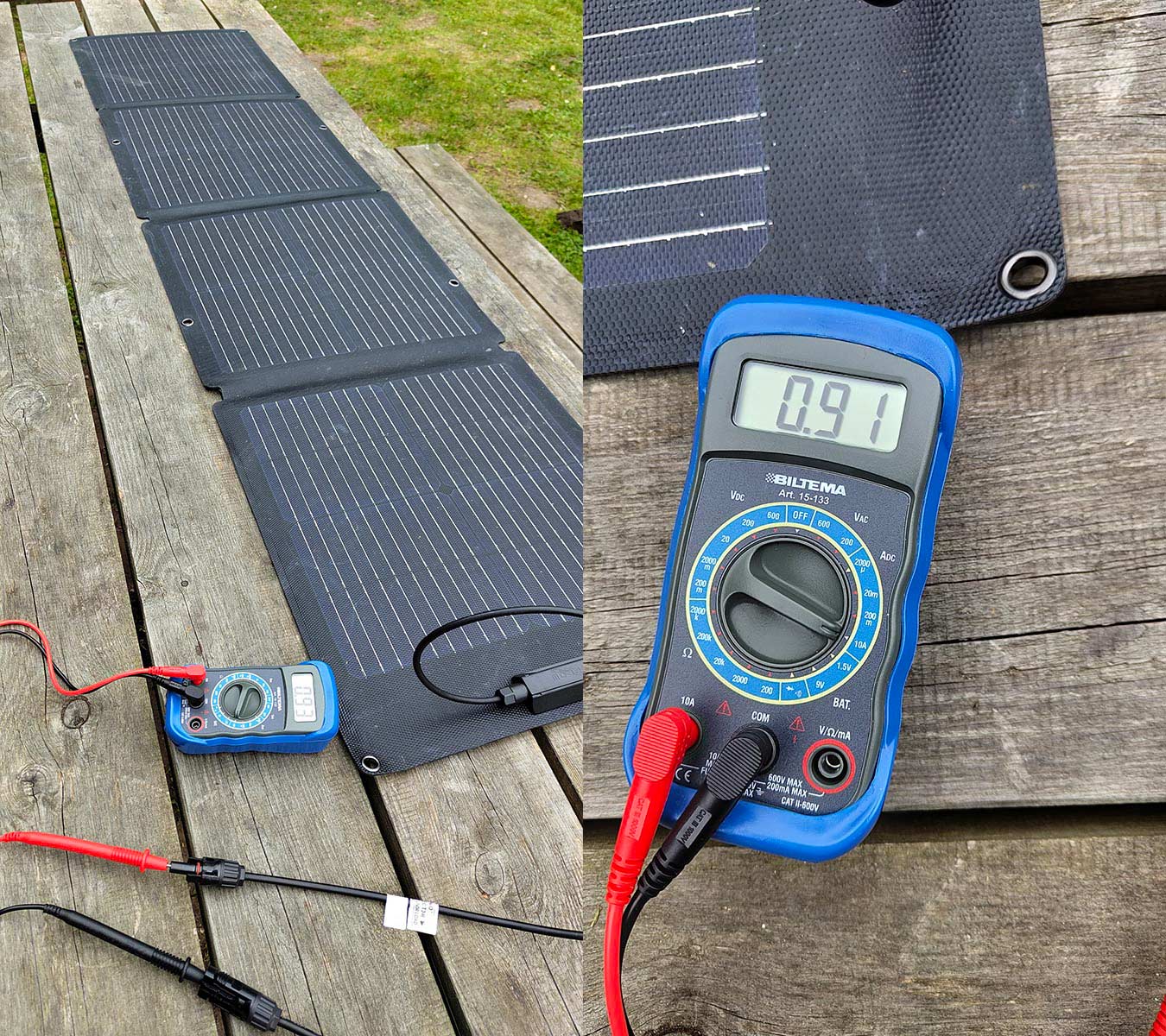
In this occasion, I charged the battery again to let it work for 3 days. According to the battery station, it will last 70h 41m, so Paula will be able to stream until Thursday 22 August at 13:40.
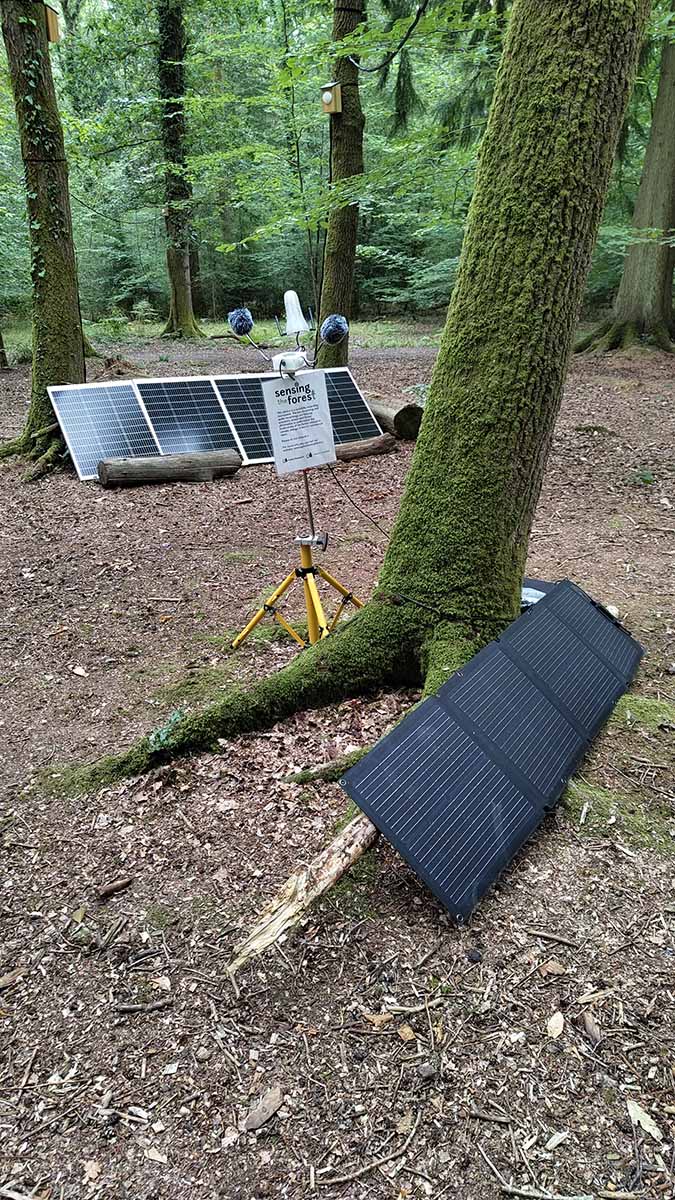
Follow-up
The plan will be to return next time with Luigi with some new measures, including a DIY powering system that replicates the successful Giorgio’s setup (streamer of the natural soudscape). We are learning so much on the way!
